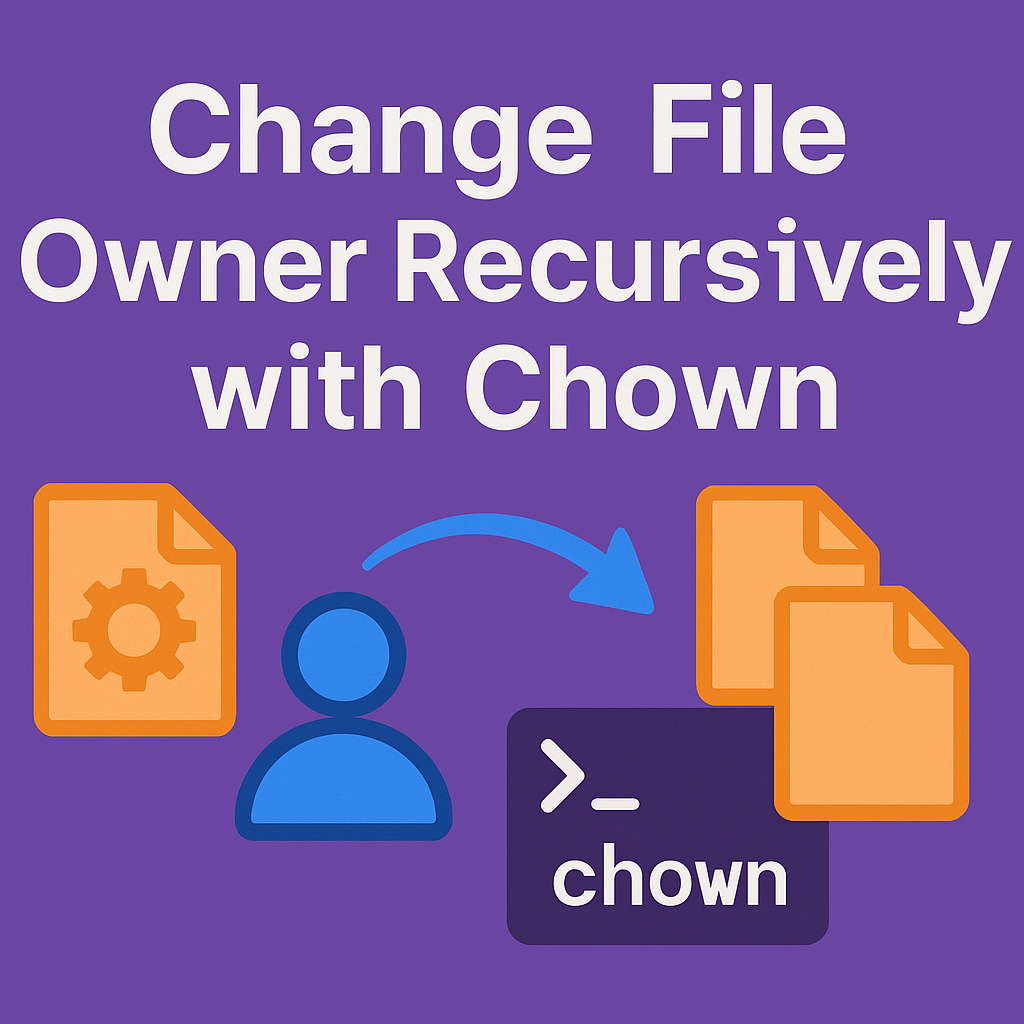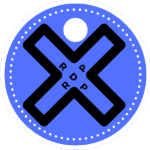
✅ Change File Owner Recursively with Chown
Managing file ownership efficiently is crucial for any Linux system administrator. The chown command allows you to change the ownership of files and directories, but when dealing with multiple nested files and folders, using the recursive option -R becomes essential. By running chown recursively, you can ensure that the specified user or group ownership applies not just to the parent directory but to all its contents within, maintaining proper access control and avoiding permission errors during execution or deployment ✅ Change File Owner Recursively with Chown.
For example, when transferring project folders to another user, you need to ensure all files inside inherit the correct ownership. Without the recursive option, only the top-level directory ownership changes, potentially causing access denied errors later. Therefore, using chown -R saves time, avoids manual repetitive ownership changes, and ensures a consistent permission structure across the entire file tree, keeping your Linux file system organized and securely managed.
Understanding File Ownership in Linux Systems
File ownership in Linux is fundamental for managing permissions and security. Every file and directory is owned by a user and a group, determining who can read, write, or execute them. The chown command is used to change this ownership, and when you need to modify ownership for an entire directory with its contents, chown recursive is essential. Using chown recursively ensures that all nested files and folders under a directory adopt the specified ownership, preventing permission issues.
Similarly, when transferring files between systems with scp recursive, it copies entire directories while retaining their structure. However, after transferring, you might still need linux recursive chown to assign ownership correctly on the new system. Understanding how ownership works alongside recursive commands helps maintain proper access controls, enhances system security, and avoids errors during script execution, software deployment, or collaborative development in Linux environments.
What Does Chown Recursive Mean?
Chown recursive refers to using the chown command with the -R (recursive) option in Linux to change the ownership of a directory and all its contents, including files and subdirectories. Normally, chown changes ownership for a single file or directory. However, when managing complex file structures, using chown recursively ensures that every nested item under the target directory adopts the new ownership. This is crucial for maintaining consistent permissions, especially after transferring directories using scp recursive, which copies entire folder structures to another system.
For example, after transferring a website folder with scp recursive, ownership might default to the user who performed the transfer. Running linux recursive chown corrects the ownership for the web server user, ensuring proper access and functionality. Overall, chown recursive simplifies ownership management in Linux, saving time, reducing permission errors, and keeping file systems organized securely.
How to Use Chown to Change Ownership Recursively
Using chown recursive is essential for changing ownership of an entire directory and all its contents in Linux. Normally, chown affects only a single file or folder, but adding the -R option allows you to chown recursively, meaning every file and subdirectory within the target directory adopts the specified user and group ownership. This is particularly useful after transferring files using scp recursive, which copies entire directories to another system but might assign them to the transferring user by default.
For example, if you move a website folder to your server with scp recursive, you need linux recursive chown to ensure the web server user owns all files, preventing permission errors during runtime. Using chown recursive maintains proper access control, keeps scripts and services running smoothly, and ensures security compliance. Overall, mastering recursive ownership changes is vital for effective Linux system administration and hassle-free file management.
Syntax Breakdown: Chown Recursive Command Explained
The chown recursive command is a powerful tool in Linux for changing ownership of files and directories, including everything nested within them. Its syntax includes the -R option, which stands for “recursive.” When you use chown recursively, the command modifies ownership for the target directory and all its files and subdirectories, ensuring uniform permissions throughout.
For example, after transferring project folders using scp recursive, the ownership might belong to the user who transferred the files. Running linux recursive chown corrects ownership efficiently without needing to modify each file individually. The general structure is: chown -R user:group directory/. Here, -R ensures that the ownership change is applied recursively, user:group specifies the new owner and group, and directory/ is the target location.
Using chown recursive saves time, ensures proper permission structures, and prevents operational errors during deployment, backups, or collaborative file management in Linux environments.
Changing Owner and Group Together with Chown
In Linux, you can change both the owner and group of files or directories simultaneously using the chown command. This is especially useful when managing shared project directories or server files. When using chown recursive, you can modify ownership for an entire directory tree in one command. This means chown recursively updates all files and subdirectories under the specified folder, ensuring consistent permissions throughout.
For example, after transferring website files to a server using scp recursive, the ownership might belong to your local user. To make them accessible to the web server, you would use linux recursive chown to set the correct owner and group together. The syntax allows specifying the user and group with a colon in between (e.g., user:group), ensuring that both are updated at once.
Using chown recursive efficiently keeps your Linux systems organized, prevents permission errors, and maintains smooth operational workflows, especially in multi-user environments.
Practical Examples of Chown Recursive in Action
Using chown recursive is crucial when managing files in Linux. Here are practical steps to understand its use:
- Transfer files with scp recursive: Copy a website folder to your server using scp recursive to maintain its full structure.
- Check ownership: After transfer, use ls -l to view current ownership. Often, it belongs to the transferring user.
- Change ownership recursively: To fix permissions, use linux recursive chown. This ensures all files and subdirectories are owned by the intended user and group.
For instance, if you transfer /var/www/html to your server, it might be owned by your username. Running chown recursively changes ownership for the entire folder tree to www-data, allowing your web server to read and execute files properly. Without chown recursive, you would need to change each file manually, which is time-consuming. Overall, mastering this command simplifies server management and prevents permission-related errors.
Common Mistakes When Using Chown Recursive
Using chown recursive is powerful but can lead to serious issues if misused. Here are common mistakes and steps to avoid them:
- Running chown recursively at root: Applying linux recursive chown to / or system directories can break your OS by changing ownership of critical files.
- Incorrect syntax: Forgetting to specify the correct user:group results in failed changes or unintended ownership settings.
- Not checking current ownership: Always run ls -l before using chown recursively to confirm which files need ownership changes.
- After scp recursive transfer: Many users forget to adjust ownership after transferring files with scp recursive, causing permission errors when services try to access them.
- Using chown recursive without understanding scope: Applying it to broad directories without caution may give unintended users access to sensitive files.
To avoid these mistakes, double-check paths, use precise user and group specifications, and confirm with ls -l to ensure proper permission management across your Linux systems.
Safety Tips: Avoiding Permission Issues with Chown
Using chown recursive efficiently requires caution to prevent system errors. Follow these safety steps:
- Check current ownership: Before running linux recursive chown, use ls -l to review file owners and groups. This prevents unnecessary or incorrect changes.
- Use absolute paths: Always specify the full path when applying chown recursively to avoid affecting unintended directories.
- Avoid running on system directories: Never run chown recursive on / or /usr, as changing critical system file ownership can break your OS.
- After scp recursive transfers: Files copied with scp recursive often retain the transferring user’s ownership. Always run chown recursively to assign correct permissions to avoid access errors.
- Test on small folders first: Practice using linux recursive chown on a test directory to ensure you understand its effects before applying it to production files.
By following these safety tips, you can manage file ownership confidently, maintaining security and operational stability on your Linux systems.
Alternatives to Chown Recursive for Managing Ownership
While chown recursive is widely used for changing ownership across directories and their contents, there are alternatives depending on your needs. One option is using find combined with chown, allowing more granular control. For example, you can find files with specific extensions or types and change their ownership without affecting all files, unlike chown recursively, which applies broadly.
Another alternative is using Access Control Lists (ACLs) to manage permissions without altering ownership directly. ACLs provide detailed permission settings for multiple users and groups on a single file or directory, which is useful for collaborative environments.
Additionally, after transferring files with scp recursive, you might adjust permissions using chmod rather than ownership if your goal is to manage access levels only. However, linux recursive chown remains the simplest for ownership changes. Choosing between these tools depends on whether you need broad ownership updates or fine-grained permission management within your Linux workflow.
Final Thoughts: Mastering File Ownership with Chown
Mastering file ownership in Linux is essential for secure and efficient system management. The chown recursive command plays a crucial role when managing entire directories, as it changes ownership for all files and subfolders within a target directory. Whether you’re deploying websites, configuring servers, or handling backups, understanding how to use chown recursively ensures smooth operations without unexpected permission errors.
After transferring files using scp recursive, for instance, ownership often defaults to the transferring user. Running linux recursive chown quickly corrects this, assigning the appropriate user and group to maintain functionality and security.
Overall, learning the correct syntax, potential risks, and best practices with chown recursive prepares you to manage Linux systems professionally. It prevents access issues, keeps collaborative environments organised, and secures your file structures effectively. Incorporating this knowledge into daily administrative tasks will enhance your productivity and reliability as a Linux user or system administrator.

Leave a Reply